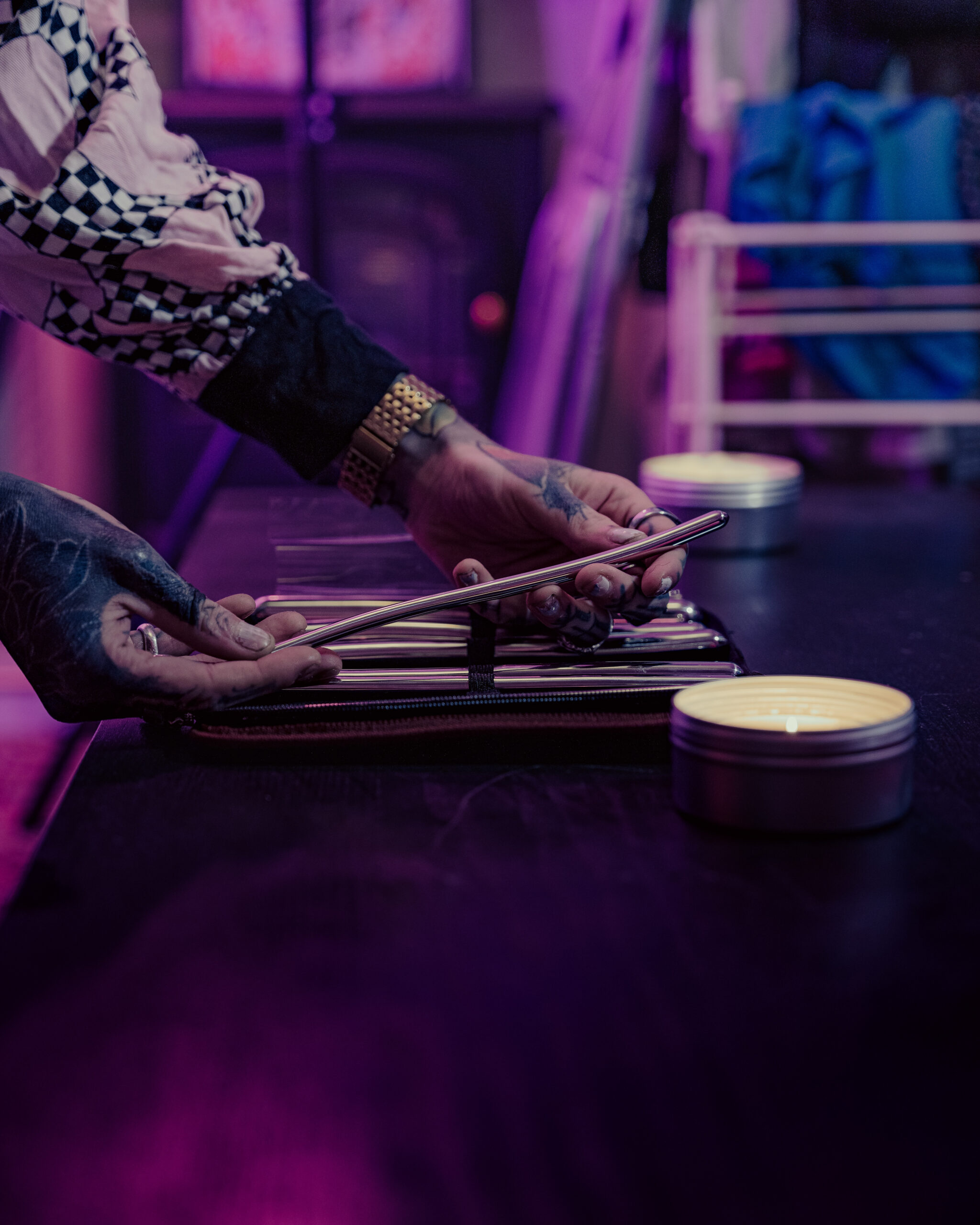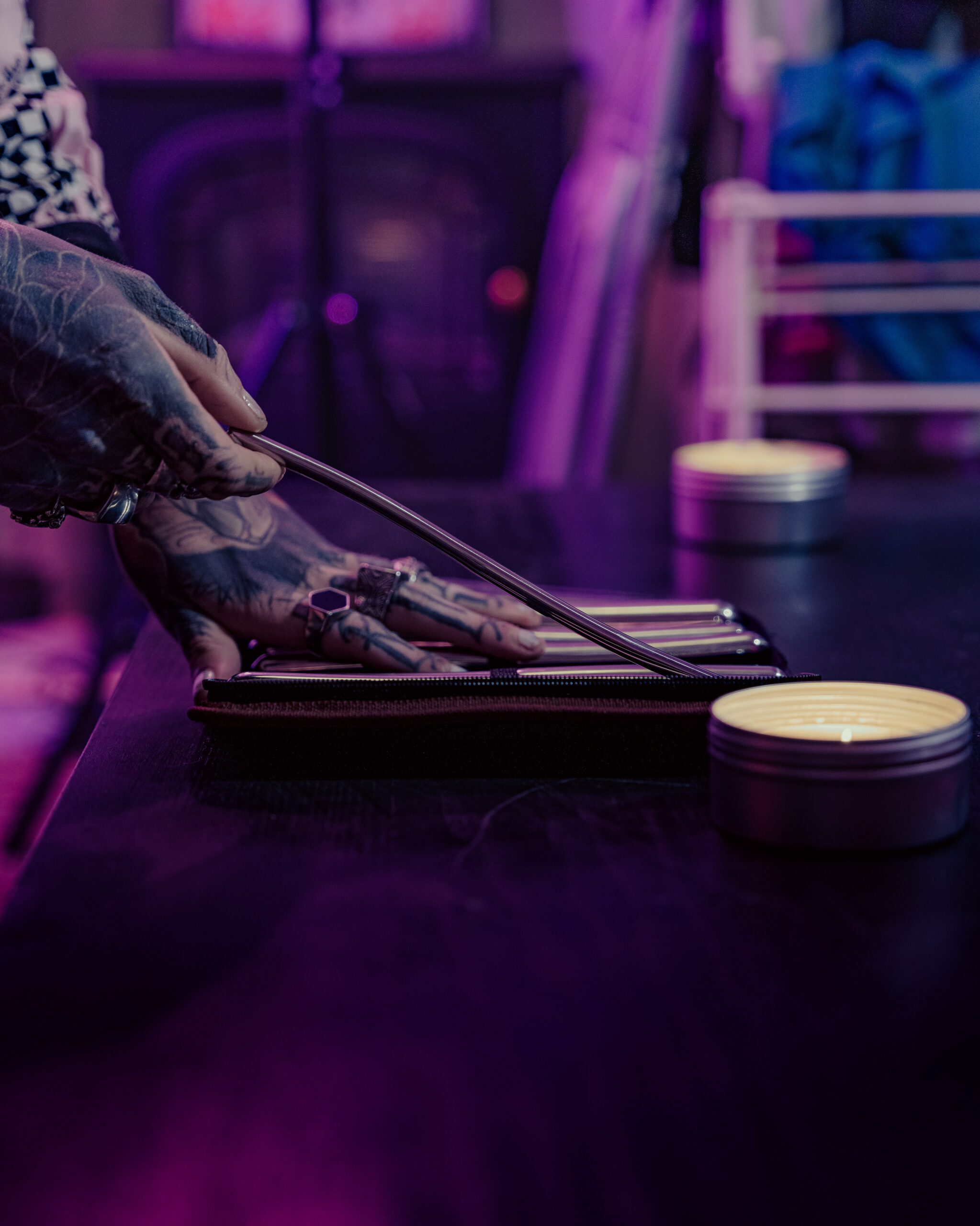The Concept
Acrotomophilia, a term derived from the Greek words “akros” meaning extremity and “philia” meaning love or affection, refers to a fetishistic attraction towards amputated body parts, particularly legs. This concept delves into the realm of unconventional desires, where individuals find beauty and arousal in the contrast between wholeness and disfigurement, fragility and resilience.
The term Acrotomophilia refers to an uncommon fetish that involves a romantic or sexual attraction to amputation, particularly of limbs.
Acrotomophilia, a term that has gained attention in recent years due to its unusual nature, refers to an uncommon fetish that involves a romantic or sexual attraction to amputation, particularly of limbs. This concept challenges societal norms and conventional beauty standards, raising questions about the complexities of human desire and the diversity of human experience.
• The allure of amputated body parts has been a subject of fascination in art and literature for centuries, with examples ranging from ancient Greek and Roman sculptures to modern-day tattoos.
• Proponents of acrotomophilia argue that this fetish is not about cruelty or exploitation, but rather about the appreciation of beauty in its most extreme forms.
• The fetish also raises questions about the relationship between disability and desire, highlighting the complex power dynamics at play when individuals with disabilities are objectified for their unique experiences.

The concept of acrotomophilia serves as a catalyst for exploring broader themes related to identity, embodiment, and human connection. As we delve into this complex topic, it becomes clear that the allure of amputation is not just about physical appearance, but also about the emotional and psychological connections that people make with their bodies and others.
• The beauty of difference is a recurring motif in discussions surrounding acrotomophilia, with proponents arguing that this fetish celebrates individuality and diversity.
• Critics, on the other hand, view acrotomophilia as a form of exploitation or objectification, highlighting concerns about consent and the potential for harm.
Despite the controversy surrounding this topic, it is essential to approach acrotomophilia with sensitivity and respect, recognizing the complexities of human desire and the diverse experiences that people have when it comes to their bodies and relationships.

This fascination can be attributed to various psychological factors, including the perception of differences in body appearance and the thrill associated with exploring unconventional desires.
The concept of acrotomophilia, or the attraction to amputation, raises interesting questions about human psychology and behavior. This fascination can be attributed to various psychological factors, including the perception of differences in body appearance and the thrill associated with exploring unconventional desires.
One possible explanation for this phenomenon is that it taps into a deep-seated human curiosity about the boundaries of physicality and the limits of the human body. Amputations, by their very nature, challenge traditional notions of beauty and functionality, sparking an emotional response in those who are drawn to them.
Furthermore, research suggests that individuals who engage with acrotomophilic content often experience a sense of thrill or excitement when confronted with images or stories about amputation. This can be attributed to the perception of risk and taboo, as well as the potential for emotional release or catharsis.

From a psychological perspective, this fascination may also be linked to issues of body image and self-acceptance. For some individuals, exploring unconventional desires related to amputation serves as a way to confront and challenge societal norms around beauty and disability.
In addition, the concept of acrotomophilia highlights the complex interplay between human psychology, culture, and society. It reveals that what is considered “beautiful” or “desirable” can vary significantly across cultures and historical periods, leading us to question our own assumptions about these topics.
Cultural Significance
Cultural significance in language English is a complex web of power dynamics, social norms, and symbolic meanings that shape our understanding of the world around us. Through words and expressions, we convey not only facts and ideas but also values, attitudes, and biases that reflect the historical, social, and cultural contexts in which they emerged.
The way we talk about certain topics can either include or exclude, normalize or pathologize, and even fetishize or stigmatize. This is evident in the case of acrotomophilia, a fetish that involves an attraction to amputation and the beauty of difference. Language plays a crucial role in shaping our perceptions of what is normal, desirable, or acceptable, and understanding this dynamic can provide valuable insights into the cultural significance of acrotomophilia.
The concept of acrotomophilia has been observed throughout history, often linked to rituals and practices involving amputations or mutilations.
Cultural Significance: Acrotomophilia has been observed in various forms throughout history, often tied to rituals and practices that involve amputations or mutilations. In some cultures, these acts are believed to possess spiritual significance, serving as a means to connect with the divine or to communicate with the dead.
- In ancient Greece, the practice of castration was associated with the god Apollo, who was revered for his beauty and perfection. This act was also linked to the concept of ” Beauty of Difference”, where the removal of physical imperfections was seen as a way to achieve spiritual enlightenment.
- In some Indigenous cultures of North America, the practice of body mutilation was considered a rite of passage, symbolizing spiritual growth and transformation. This practice often involved cutting or removing parts of the body, such as ears or fingers, which were believed to possess sacred powers.
- Additionally, in certain African cultures, the practice of scarification has been observed, where physical scars are created through cuts, burns, or other forms of mutilation. These scars are often seen as symbols of beauty, strength, and spiritual power.
This phenomenon speaks to the complex and multifaceted nature of human culture and our varying perceptions of beauty, perfection, and spirituality. By examining acrotomophilia through a cultural lens, we can gain insight into the ways in which humans have sought to transcend mortality, achieve spiritual growth, and create meaning through physical transformation.
Acrotomophilia is occasionally depicted in fiction, such as in certain works of fantasy literature or art, serving as a means to explore themes of power dynamics and identity.
Acrotomophilia, a fetish that involves attraction to amputation, has been depicted in various forms of media as a means to explore complex themes and ideas.

This fascination with the beauty of difference can be seen in certain works of fantasy literature and art, where characters with missing limbs are often portrayed as strong and powerful.

In these narratives, acrotomophilia serves as a metaphor for the human desire to transcend limitations and challenge societal norms. By celebrating individuals with prosthetic or amputated limbs, these stories promote a sense of acceptance and inclusivity.
Moreover, the depiction of acrotomophilia in fiction allows creators to explore power dynamics and identity in unique and thought-provoking ways. It raises questions about the nature of beauty, ability, and what it means to be human.
Through its representation in media, acrotomophilia sheds light on the complexities of attraction and desire, encouraging viewers to consider the diversity of human experience and the many ways in which we can express ourselves.
Practical Considerations
Practical considerations arise when navigating the complexities of acrotomophilia, a fetish that revolves around the attraction to amputations. For individuals who identify with this fascination, the pursuit of exploring these desires can be fraught with logistical challenges. Medical considerations, such as ensuring safe and hygienic procedures, must be carefully weighed against personal boundaries and comfort levels. Furthermore, societal stigma and misconceptions surrounding amputation and disability can create significant barriers to open discussion and education.
The pursuit of acrotomophilia poses significant practical concerns, including the risk of infection and tissue damage during amputation procedures.
The pursuit of acrotomophilia poses significant practical concerns, including the risk of infection and tissue damage during amputation procedures.
Engaging in or observing amputations can have profound emotional and psychological effects on individuals involved, emphasizing the need for responsible and informed participation.
Involvement or observation of amputations can have profound emotional and psychological effects on individuals, emphasizing the need for responsible and informed participation.
Practical considerations must be taken into account when exploring this sensitive topic. For those who identify with acrotomophilia, it is essential to prioritize their well-being and ensure that their involvement in or observation of amputations does not lead to emotional distress or trauma.
The psychological impact of witnessing or participating in amputations should not be underestimated. It can evoke feelings of discomfort, anxiety, and even guilt in some individuals. Therefore, it is crucial to establish clear boundaries and guidelines for those involved, as well as provide access to support services and resources to address any emotional aftermath.
Furthermore, the use of medical equipment and settings should be approached with caution. Ensuring that all parties involved are comfortable and consenting can significantly reduce anxiety and stress. Establishing trust between medical professionals and individuals with acrotomophilia is also vital in creating a safe and supportive environment for those involved.
Education and awareness are also critical components in navigating the complexities of acrotomophilia. Understanding the emotional and psychological aspects of involvement or observation can help mitigate potential risks and promote more informed participation. By prioritizing the well-being and safety of all individuals involved, it is possible to create a framework for exploration that respects the boundaries and dignity of those who identify with this fetish.
Buy OhMiBod vibrators for hands-free pleasure and fun at Peaches and Screams Explore lingerie for men at Peaches and Screams Buy Hott Products Unlimited for exciting and affordable toys at Peaches and Screams Shop sex toys for ladies at Peaches and Screams Explore You2Toys for high-quality and affordable pleasure products at Peaches and Screams
Emily Patricia Fae Kindra Mann Azmia Magane BeyBey Name
- Sculptra Surrey – Collagen Stimulation Therapy Near Great Bookham, Surrey - May 30, 2025
- Light Eyes Ultra – Dark Circles Treatment Near Headley, Surrey - May 30, 2025
- Profhilo Treatment Near Nutfield, Surrey - May 29, 2025
